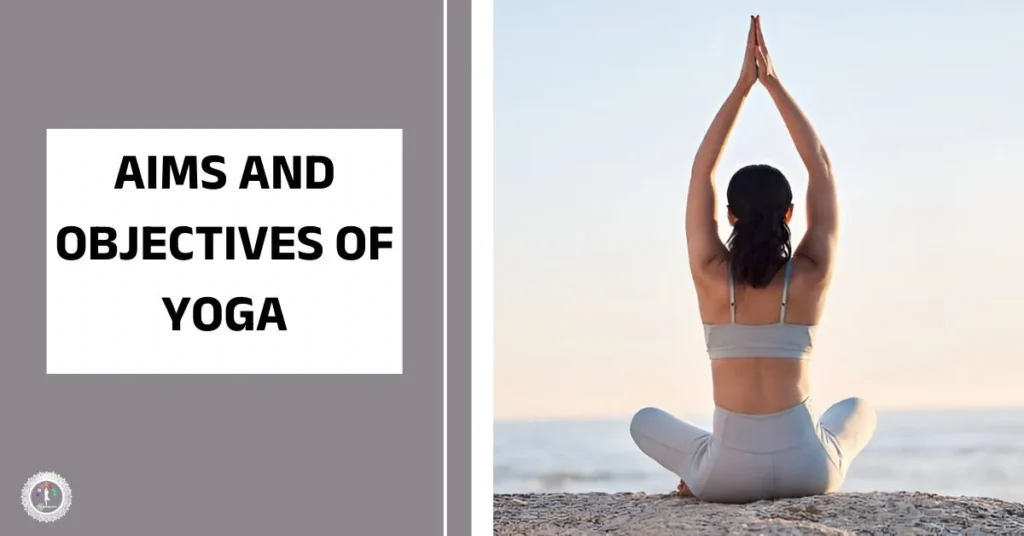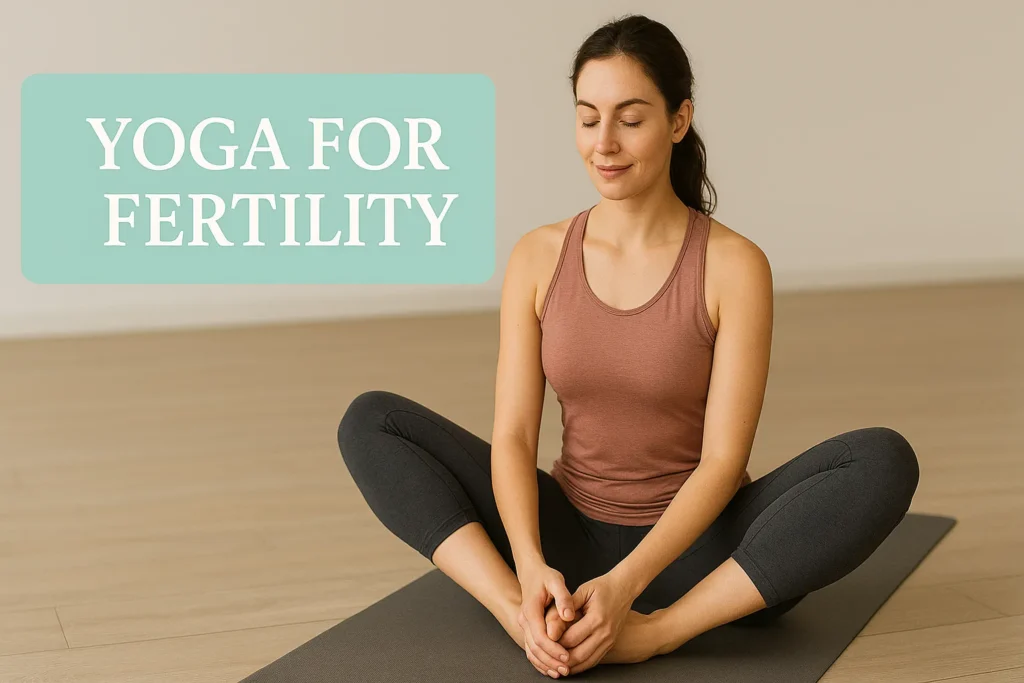Yoga is one of the oldest practices that millions of people across the world have adopted because of its physical, mental, and spiritual benefits. Developed over 5,000 years ago in India, yoga has evolved to be a holistic system of well-being that includes not only postures but also breathing exercises, meditation, and ethical principles. The aims and objectives of yoga are numerous. They lead to personal development, good health, and inner peace. In the following blog, we will dive deep into the learning objectives of yoga in simple language.
What is Yoga?
Before discussing the aims of yoga, let us briefly explain what yoga is. Yoga practice is a combination of bodily postures (asanas), breathing techniques (pranayama), and meditation to create equilibrium in the body, mind, and spirit. It is a deep connection with oneself and connecting with the universe, where the whole body, including the mind and spirit, becomes healthy and fit for living.
What is the Aim of Yoga?
The primary aim of yoga is to bring about harmony between the body, mind, and soul. Below are the key aims that Yogaasan focus on:
Physical Health and Flexibility
One of the best aims of yoga is the building of physical well-being through various asanas like Mandukasana pose and Purna Matsyendrasana, and this helps people build greater strength, develop flexibility in their body muscles, enhancing their overall level of fitness; the body eventually becomes stable and aligned; hence they avoid injuries by proper bending and posture; thus increasing flexibility, reduces tension across the muscles and joint space.
Mental Clarity and Focus
Yoga is not only just about physical health but also about mental health. Through regular practice, yoga aims to calm the mind, reduce stress, and improve concentration. Meditation and breathing exercises play an essential role in achieving mental clarity. These techniques help in clearing mental clutter, making it easier to focus on tasks and think more clearly.
Spiritual Growth
Yoga has a deep spiritual component. It is really about connecting with your higher self and understanding the deeper truths of life. The practices include meditation and mindfulness, to name a few, all in an attempt to develop inner peace and spiritual awareness. It gives people a sense of purpose, a feeling of calmness and a connection to the world around them.
Emotional Balance and Healing
Yoga also emphasizes emotional well-being. It helps individuals overcome feelings of anxiety, fear, and anger by encouraging self-awareness and emotional release. Individuals practicing yoga can develop better control over their emotions, be present in the moment, and cultivate a positive outlook on life. It helps heal emotional wounds by helping individuals let go of their past traumas.
Stress Reduction and Relaxation
In today’s fast-paced world, stress has become a major health concern. Yoga aims to reduce stress levels by calming the nervous system and promoting relaxation. Through deep breathing and mindful movements, yoga helps lower cortisol levels, the hormone responsible for stress. The relaxation techniques in yoga, such as the savasana pose (corpse pose), help the body and mind enter a state of deep rest and rejuvenation.
Know The Objectives of Yoga With Yogaasan
While the aims of yoga are broad, the objectives provide more specific goals that individuals work towards in their practice. Here are some of the key objectives of yoga:
Improving Flexibility and Strength
Yoga helps increase flexibility and muscle strength. Each yoga pose, such as Bhekasana and Naukasana pose, is designed to stretch and strengthen specific areas of the body, making muscles more flexible and toned. Over time, consistent practice leads to a greater range of motion, reducing stiffness in the joints and promoting overall physical well-being.
Enhancing Respiratory Function
One of the main objectives of yoga is to improve the respiratory system through controlled breathing exercises (pranayama). Proper breathing is essential for overall health, and yoga teaches how to breathe deeply and efficiently. This helps in improving lung capacity, boosting oxygen supply to the body, and calming the mind.
Achieving Mental Peace and Calm
Meditation and mindfulness practices are integral to yoga. These techniques help individuals clear their minds, let go of worries, and find inner peace. Yoga aims to create a state of calm, reducing feelings of anxiety or depression. Through focused meditation, yoga practitioners learn to control their thoughts and emotions, leading to a peaceful and balanced mind.
Cultivating Self-Discipline
Yoga requires dedication and commitment. It teaches individuals to stay disciplined and focused on their practice. By sticking to a routine and learning objectives of yoga, practitioners develop greater self-control and mental resilience. Self-discipline in yoga often translates into other areas of life, helping individuals become more organized, motivated, and goal-oriented.
Promoting Holistic Well-Being
The ultimate objective of yoga is to promote holistic well-being, which encompasses physical, mental, and spiritual health. It is about creating a balanced lifestyle that nurtures the body, mind, and spirit. Yogaasan always encourages you to perform yoga, eat a healthy diet, do regular physical activity, have emotional awareness, and grow spiritually. It helps people live in a way that is in alignment with their true nature and purpose.
Benefits of Achieving Aims and Objectives
By focusing on the aims and objectives of yoga, practitioners can experience a range of benefits, including:
- Increased energy levels
- Better sleep quality
- Improved immune system function
- Enhanced emotional stability
- Stronger mind-body connection
Final Words
The aims and objectives of yoga provide a guide for personal growth, health, and well-being. Whether you want to improve your physical fitness, manage stress, or attain spiritual growth, yoga can provide you with the path toward those goals. Regular practice and learning objectives of yoga with Yogaasan will allow people to experience improved health, clearer minds, and a greater connection to their inner selves. Yoga is not only a physical exercise but also a way of life, promoting balance, peace, and harmony in every sphere of life.
If you are a beginner, you can start with beginner-friendly poses and gradually progress into more complex ones as you become comfortable. Remember, it is a personal journey to yoga, and you need to practice at your own pace. Patience and dedication will unlock the many benefits that this practice offers, making it truly life-changing for both body and mind.
Frequently Asked Questions on Aims and Objectives of Yoga
What is one of the most important objectives during yoga?
One of the most important objectives of yoga is achieving mental clarity and focus. Yoga encourages mindfulness, helping practitioners clear their minds, reduce distractions, and enhance their ability to stay present. Through techniques like meditation and deep breathing, individuals can cultivate greater self-awareness and mental peace, which is essential for personal growth and well-being.
What is the main aim of yoga?
The main aim of yoga is to create harmony and balance between the body, mind, and spirit. By combining physical postures (asanas), breathing techniques (pranayama), and meditation, yoga seeks to align all aspects of a person’s being, promoting overall health, well-being, and spiritual growth. The practice helps individuals connect with themselves on a deeper level, leading to a more peaceful and fulfilled life.







